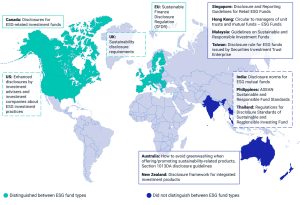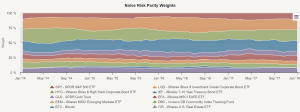A Guide to Understanding the Different Types of Breakout Trading Strategies
3 min read
Breakout trading strategies take advantage of price movements beyond key levels of resistance and support to indicate a change in market trends. When coupled with increased trade volume, breakout strategies may signal greater investor conviction and add confidence that their breakout can last over time.
Breaking out of established thresholds requires close scrutiny to avoid false breakouts, while employing an effective risk management strategy such as monitoring retests can further enhance long-term trading success.
1. Trend-Following Strategy
As its name implies, trend following is an investment strategy designed to take advantage of market movements. Traders using this approach seek out stocks that show clear uptrend or downtrend patterns before investing when these shifts favor them.
For this, they study various factors, such as market news, analyst reports and investor sentiment analysis. Furthermore, they analyze individual stocks to detect any trigger events which could accelerate a breakout event.
Once a trading opportunity is identified, traders should then set their price target and stop levels at key levels. A careful approach to risk management is imperative as reverse risks associated with this type of strategy could cause large losses.
Due to volatile markets’ unpredictable behavior, it can be challenging for new traders to distinguish a genuine breakout from fleeting fakeouts. Therefore, practicing on a demo account allows new traders to test out their strategies before investing real money and helps prevent costly mistakes that could derail their progress.
2. Volume Strategy
This breakout trading approach emphasizes sudden price jumps and their associated momentum shifts, and their associated spaces created. Recognizing these spaces and anticipating when breakout will occur are keys for traders; traders then need to act quickly before momentum either stalls out or reverses itself.
Utilizing this strategy requires skill in anticipating and entering trades when prices cross key points of support or resistance. The most advantageous entry points can often be identified by identifying critical support and resistance levels and then waiting for price movements that pass them with significant volume spikes as proof of their breakout.
Monitoring and verifying that an increase in volume corresponds with any breakout and signals a genuine shift in market sentiment is also paramount to helping traders avoid false breakouts that may cause losses unless recognized quickly and confidently. By combining these elements with other technical indicators, traders can identify reliable breakout opportunities and gain an edge in the market.
3. News-Based Strategy
Market news can provide opportunities for profitable trades if you know how to read it correctly. From government reports and earnings announcements to geopolitical conflicts and high-stakes trade negotiations, news of any type can have an immediate and dramatic effect on asset prices.
Successful traders utilize various trading strategies to take advantage of volatile markets and find profitable trading opportunities. They analyze how news events might impact market sentiment before using technical indicators to pinpoint entry and exit points.
By setting clear trading rules based on market conditions and personal style, they create clear trading rules to align with a suitable type of trend. This helps them avoid fleeting fakeouts while capitalising on breakouts likely to cause significant price trends that accelerate; capitalising on each momentum as each trend accelerates is key in realising profits with CFD trading; trading breakouts without an established plan often leads to frequent entries and exits that incur transaction and brokerage costs that quickly add up over time.
4. Fibonacci Strategy
Breakout trading requires being able to identify genuine price trends at their earliest stages and act upon them for maximum financial gain. Furthermore, having an effective risk management and exit strategy in place is crucial.
Fibonacci levels provide traders with a way to strategically plan their trades by anticipating potential support and resistance zones. Fibonacci levels often mark significant inflection points in market trends; using these to identify them early can improve your success rate when trading.
Wait for assets that are currently consolidating to reach a consolidation phase before waiting for their price to pull back towards one of the key Fibonacci levels such as 38.2%, 50% or 61.8% in an uptrend or rebound at these levels in a downtrend with increasing volume – this will allow you to enter trade by purchasing when resistance breaks or selling when support does – however for more complete analysis it is wise to combine Fibonacci levels with other technical indicators as well.






